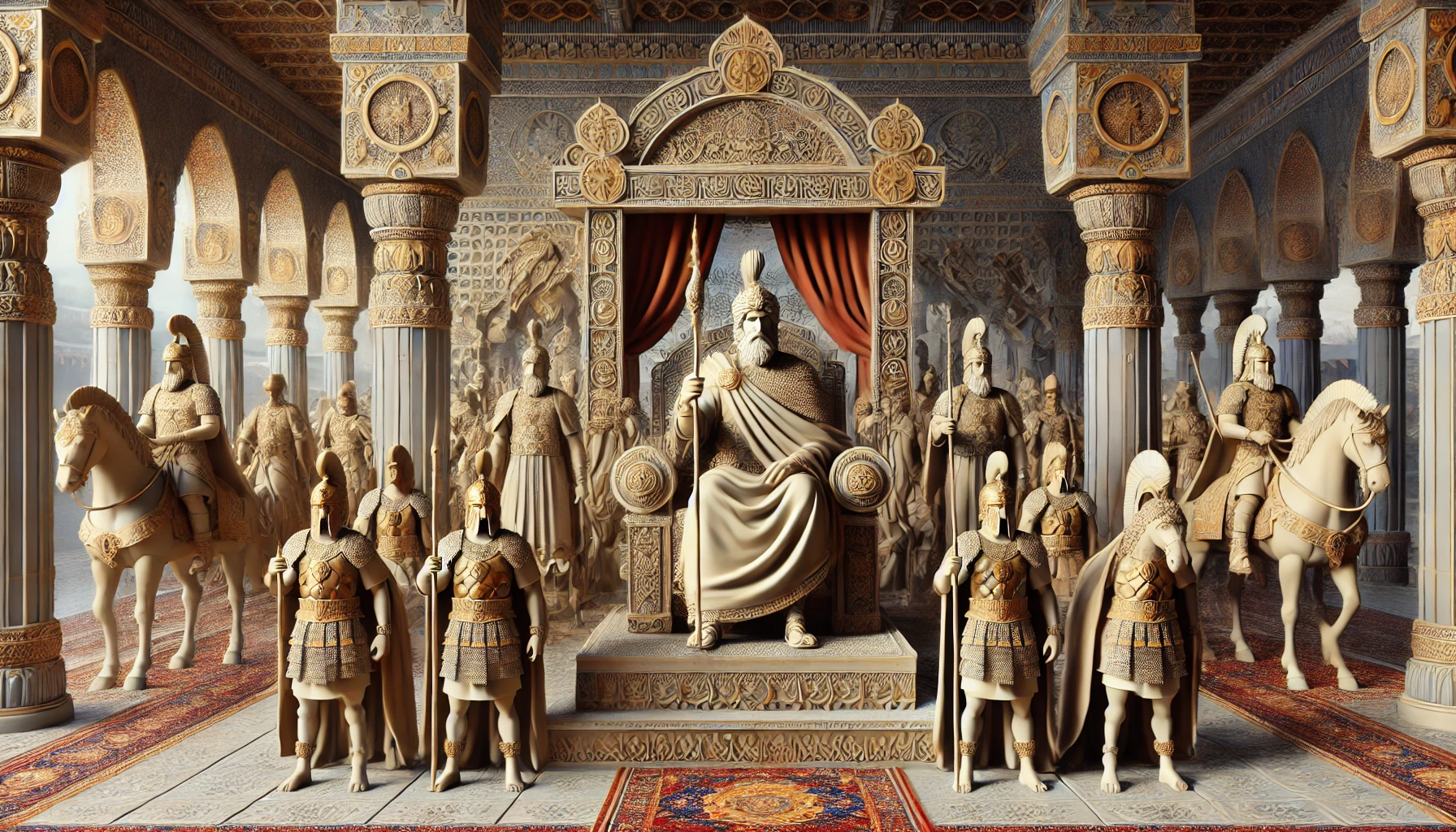One of the important characteristics of the Parthian empire was the courage and capable governance of the prominent Parthian rulers. The period when the Parthian empire flourished falls between 247 BCE and 224 CE, covering the extensive territory of Persia and beyond.
Great Parthian rulers were valued for being wise and sophisticated military strategists as well as for their outstanding diplomacy skills and the very fact that they maintained an enormous empire under their reign for the course of time.
- The Parthian Empire has been influential in helping to open up various trading routes, such as the Silk Road.
- They engaged with many other empires along their borders, mainly with the Romans and the Seleucids.
- The Parthian rulers maintained a harmonious blend of Persian and Hellenistic cultures that made for a strong cultural heritage.
- A few of the Parthian rulers enhanced the military might of the empire through heavy cavalry.
- Their administrative system was devolved wherein the regional leaders enjoyed a lot of autonomy.

Arsaces I: The Founder King
Founded by the Parthian rulers, with the establishment of the Parthian Empire, it was Arsaces I who started and founded a powerful force against Seleucid domination. He overthrew the Seleucid kings, therefore, establishing Parthian independence. The ruler united many tribes and then created a very strong coalition that resisted invasions. Under his leadership, the Parthian Empire laid the bases for a long-lasting dynasty. His leadership marked a new era wherein Persian traditions once again began to revive against the backdrop of foreign influences.
Mithridates I: The Great Expander
Mithridates I was one of the most prominent Parthian rulers; he was a man who expanded the frontiers of the empire. He conquered places that also included Media, Babylonia, and Elam. Expansion brought so much wealth and extensive culture into the empire. Mithridates also had a very tolerant policy that allowed various different cultures to flourish under his reign. That way, he consolidated the unity of his empire, hence the title “Mithridates the Great.”
Artabanus II: The Resilient Ruler
Among the Parthian rulers, Artabanus II was one of them who passed his reign in a disturbing period. Artabanus II reigned in stormy times; however, despite the internal revolts and successful invasions made by the Romans, he emerged as a sovereign. His military tactics and his abilities in diplomacy were secrets to Parthian sovereignty.
Phraates IV: The Diplomat
Phraates IV is known for the diplomatic relations he shared with Rome. He is considered to be wise in tackling another power-thieving than him. During his reign, pressure mounted on the empire as the eastern ambitions of Rome rose high. Phraates IV coped with this situation through strategic relations and negotiations. During his reign, it can be seen that there was always an attack and a counterattack carried out by the successive Parthian rulers against the neighboring powers.
Vologases I: Cultural Revivalist
One of the great Parthian rulers was Vologases I. He emphasized the revival of cultural identity within the empire. Vologases I chose to spread the usage of Parthian language and even aimed for a Greek influence diminishment. In his rule, he emphasized Zoroastrianism, which strengthened the Persian cultural and religious tradition. All these ventures portrayed a new phenomenon toward the restoration of Persianism inside the Parthian Empire.

Decline and Legacy of Parthian Rulers
The Parthian rulers’ decline began in the early 3rd century. This period was characterized by a chain of inner quarrels and uninterrupted wars with the rising Sassanian dynasty, which was beginning to weaken the control of the Parthian kings. Still, the Parthian rulers left irrevocable marks on history. They bridged the cultural as well as the political gap between the East and the West. Their military inventions, such as the armored cavalry, inspired generations of empires that were yet to be born.
Important Achievements of Parthian Kings
- Military Innovations: The Parthian kings gave different novel cavalry tactics, like the one internationally famous as the “Parthian shot”, which is known to be one of the most popularly studied forms of military strategizing.
- Cultural Synthesis: The Parthians struck a balance between Persian and Hellenistic culture, making the wealth of the region’s heritage richer.
- Expansion of Trade: With the control of the routes of trade, the empire constructed many highways; it also allowed economic growth and cultural contact among continents.
- Balance in Diplomatic Policies: They presented an efficient handling of diplomatic ties with other powers that were surrounding them through some delicate maintenance of the Cold War and warm war.
- Religious Tolerance: The rulers of Parthia adopted the policy of religious tolerance. All faiths are allowed to be practiced and developed.
Conclusion
The Parthian rulers were influential in forming the political, cultural, and military domains of their time. The capacity of ruling the large and diversified empire provided the framework for the subsequent Sassanian Empire. Even after their decline, the legacies of these rulers kept influencing Persian history and culture. The Parthian rulers are an important page in the annals of ancient empires that are remembered with the traits of tenacity, shrewd leadership, and contributions towards the culture.
| Parthian Rulers UPSC Notes |
| 1. The Parthian rulers governed a vast empire from 247 BCE to 224 CE, marked by strong military and diplomatic skills. 2. Arsaces I, the founder, united tribes and established Parthian independence by overthrowing Seleucid control, laying the empire’s foundations. 3. Mithridates I expanded the empire’s boundaries, conquered regions like Media and Babylonia, and promoted cultural diversity and tolerance. 4. Artabanus II displayed resilience during internal revolts and external threats, using military tactics to maintain Parthian sovereignty. 5. Phraates IV skillfully balanced relations with Rome, using diplomatic strategies to navigate the empire through external pressures. 6. Vologases I emphasized cultural revival, promoting the Parthian language and Persian identity, marking a shift from Greek influences. |

